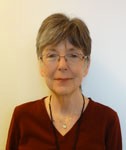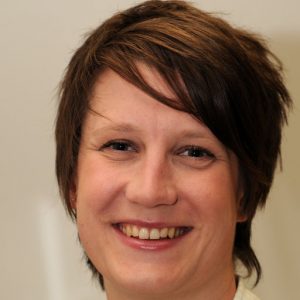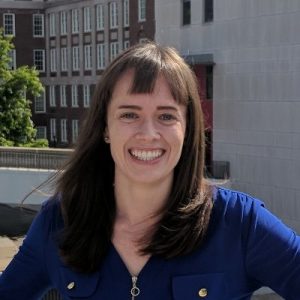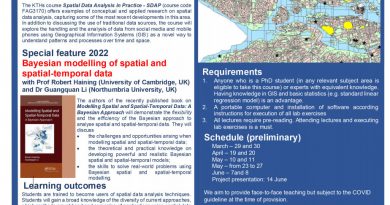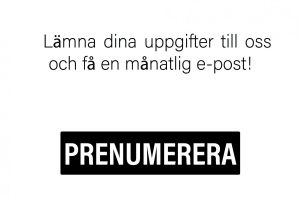Risky places for crime- Safeplaces Network Seminar series | 21 January – 18 November 2021
Missa inte Säkraplatsers föreläsningar 2021: Varannan torsdag 17.30!
Risky places for crime
Safeplaces Network – Seminar series
21 January – 18 November 2021
17:30 CET
Crime does not occur randomly, it tends to be concentrated in places that are ‘risky’. These places include a range of settings such as convenience stores, parks, and transit stations, even confined to particular street corners, depending on the crime. However, our understanding of the places and settings that attract disproportionately high levels of crimes is still in its infancy.
We will be answering the following questions:
- What is a risky facility? Are they crime hotspots? Crime attractors and/or radiators?
- Which are the most typical examples of risky places for crime? Why do places vary in risk?
- Can risk be reduced? How can crime prevention support the improvement of safety conditions in risky places?
- How can ICT technology support safety interventions in risky places?
- How can we critically discuss safety needs of different groups in risky places? Can we plan for safe, inclusive and sustainable places?
We start by critically reviewing the theory of risky places, examining measurement challenges and opportunities to reduce crime risk across a range of settings and discussing safety in risky places in an interdisciplinary perspective. This series of seminars will be carried out in cooperation with the School of Social Sciences, Nottingham Trent University in the UK.
This series started in 2019 with local seminars focusing on transport nodes as risky places organized by Safeplaces network. In 2021, these one-hour lectures will be online, twice a month, starting 17:30 CET, followed by discussion.
All lectures will be held in English.
The chairs of the series are Prof Vania Ceccato, KTH-Safeplaces network and Associate Professor Andrew Newton.
We start the series with two of the most prominent scholars in the field of environmental criminology, Prof John Eck, University of Cincinnati, USA and Patricia Brantingham, Simon Fraser University, Canada.
Welcome!
21 January 2021 (17:30 CET)
Risky facilities: Advancing theory and making difference in practice
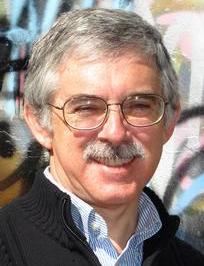
Prof John Eck, University of Cincinnati, USA
Risky facilities provide opportunities for the prevention of crime at risky places. What characteristics do the high crime facilities possess that are not present at facilities with lower rates of crime? It is these characteristics that offer the most promising explanations for these crime discrepancies. In this lecture, we argue that the distribution of crime across a population of similar facilities follows a J-curve: a few of the facilities account for most of the crime in these facilities. We revisit some of the explanations for risky facilities; examine measurement problems associated with studying them; list policy options; and conclude by exploring the hypothesis that crime concentration among groups of homogeneous facilities may be the outgrowth of complex dynamic interactions among individuals–offenders, targets, and place managers.
28 January 2021 (17:30 CET)
Beyond crime generators and attractors
Patricia Brantingham, Simon Fraser University, Canada
A tenet of crime pattern theory (Brantingham and Brantingham, 1993) is that certain places may act as a crime attractor, crime generator, crime detractor, or crime neutral area. Originally, it was postulated that places which bring lots of people together, whereby an offender identifies an opportunity for crime that was not pre-planned, can be considered as a generator of crime; whereas some places are already known to offenders as potentially good targets for crime will be an attractor of crime. Both can be considered as risky places. In contrast, other places can be considered crime neutral or crime detractors, and are therefore places of low risk of crime. This lecture builds on the article by Kinney et al. (2008) and considered the extent to which land use and urban design will influence crime generators and attractors, crime concentration, and the composition of risky places.
4 february 2021 (17:30 CET)
Crime absorbers, crime radiators as risky places
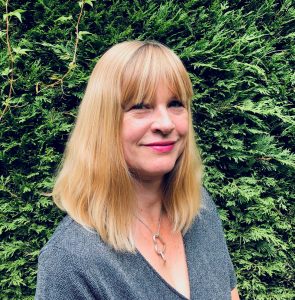
Kate Bowers, UCL Department of Security and Crime Science, UK
This chapter re-examines the concept of crime radiators and crime absorbers first introduced by Bowers in 2014. This paper explored the notion of theft around risky facilities to identify how these places attract crime. It compared theft at two settings, within risky facilities themselves and in their neighboring environs. Two hypotheses were tested. Firstly, that risky facilities were an absorber of crime, thus it was nearby facilities and the presence of local land use that drove crime at these risky facilities. The second was for crime radiators, and that the risky facilities themselves were the main driver for crime which then radiated out towards nearby environs. By comparing this across a range of previously identified risky facilities, including bars or pubs, cafes, restaurants, shops and retails, and banking, this found that risky facilitators tended to act as crime radiators, whereby they were a driver for both crime in their internal setting and to their nearby setting. Drawing from this research on the comparison between internal and external levels of theft, the author suggests the use of crime absorbers and crime radiators as unit of analyses for future research. It will further identify a set of practical interventions related to this.
11 february 2021 (17:30 CET)
Risky actions and risky places
Beth Hardie, Affiliated researcher, Centre for Analytic Criminology, University of Cambridge, UK
This seminar emphasises the role of person-environment interaction in acts of crime. Rooted in the theoretical framework of Situational Action Theory, this discussion of risky places centres on the interaction of crime actors with the risky characteristics of settings. Alongside the more commonly studied characteristics of settings, a crucial component of risky places is the presence of risky people engaging in risky activities. Most importantly for this perspective, studying this ‘situational interaction’ requires data that captures the convergence of particular kinds of people and particular kinds of settings in the spatially and temporally relative moment of an act of crime. The Space-Time Budget (STB) is research tool designed to do just that. This seminar revisits some published findings using rare STB data from the Peterborough Adolescent and Young Adult Development Study (PADS+) to demonstrate why this kind of approach and methodology is so important for our understanding of risky places, and to highlight what distinguishes the findings facilitated by such methods from those generated by more traditional approaches to studying concentrations of crime.
11 march 2021 (17:30 CET)
Public Transit – Risky facilities and ‘busyness’
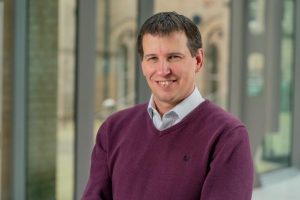
Assoc. Prof. Andrew Newton, Policing and Criminology, NTU, UK
This lecture will explore the extent to which public transit environs can considered as risky places for crime. Drawing on a range of empirical studies by the author and other colleagues in the field, it will firstly examine how the ideas presented in previous seminars, namely risky facilities, crime generators and attractors, crime absorbers and radiators, and space time budgets can be used to explain crime at public transport. It will then refine these ideas to consider how some of the unique and complex characteristics of public transport systems contribute to their risk. These include: the periodicity and regularity of travel; the variety of users on the system; the multi-functional nature of many transit settings; the position of a transit setting within a transit network; and the concept of the ‘busyness of transport settings, for example comparing peak to off peak travel times. It will conclude by considering the implications of this for crime prevention, before identifying some key yet perhaps unanswered questions for future research.
18 march 2021 (17:30 CET)
How can paths be risky
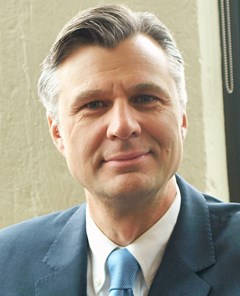
Prof. Douglas Wiebe, Biostatistics, Epidemiology, and Informatics, Perelman School of Medicine, USA
Studies of crime and place have found that incidents of assault and victimization occur more often in some locations than others. Studies of individuals’ paths provide a different approach to study places and crime, by investigating whether the risk of committing violence or the risk of being assaulted varies from location to location and from one moment to another as individuals walk or otherwise travel over the course of their activities. If the level of risk varies over the path of an individual’s travel, it should be possible to measure that variability and identify evidence that a change from a lower to higher level corresponds to an abrupt onset of an assault or victimization event. This paper describes theoretical constructs that lay the foundation for such an approach, and study design, measurement, and modeling options that can be used to study the notion that travel paths can be risky.
25 march 2021 (17:30 CET)
Alcohol-serving Businesses as Risky Places
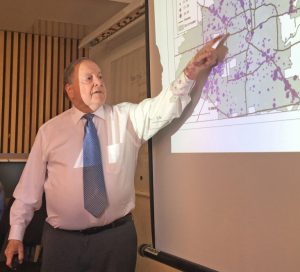
Dr. Ned Levine, Urban Researcher, Ned Levine and Associates, USA
Alcohol abuse has long been associated with health problems and social ills including spousal and child abuse, crime and motor vehicle crashes. This lecture will examine the relationship of businesses that serve alcohol for consumption with crime and alcohol-related motor vehicle crashes. Using data from Houston, Texas, serious crimes committed in 2016 and alcohol-related motor vehicle crashes in 2012-14 were examined in relationship to alcohol-serving businesses in the city. The businesses were concentrated towards the center of the city and also in clusters. Eighty-five clusters of alcohol-serving businesses were identified, covering 42% of the businesses but in only 3% of the city’s area. These clusters contained approximately 14% of serious crimes and 17% of alcohol-related vehicle crashes. A higher concentration of both types of events occurred late in the evening and after Midnight. The data were allocated to roadway segments and a spatial regression model showed that, controlling for the type of roadway, the more alcohol-serving businesses there were on a segment, the greater the number of alcohol-related vehicle crashes that occurred. Further, the relationship was exponential, suggesting that the concentration of alcohol-serving businesses increases the likelihood of alcohol-related vehicle crashes (and most likely serious crimes, too). Possible reasons for the concentration effect are discussed and policy implications are outlined.
22 april 2021 (17:30 CET)
Risky Places and Public Housing: Understanding Gun Violence in NYC

Many New Yorkers today enjoy a far safer and less risky city than the 1990’s — 2000’s , in every borough and by nearly any measure. But as New York City’s violent crime retreated, it continued to cluster both geographically and demographically. In particular, New York City’s public housing residents in the last twenty years came to suffer from growing and often extreme levels of gun violence—even as shootings plummeted citywide to half the national rate. In NYC, gun violence has decreased 24.2% in New York City between 2011-2015, but during this same time period, shootings increased 8% in public housing and are now five times greater than the city average. In several NYC public housing developments, some gun violence victimization rates are ninety times higher than the citywide rate – these public housing developments have become the ‘riskiest places’ in NYC.
29 april 2021 (17:30 CET)
Measuring fear in risky places

In the past couple of years, the advancement of smartphone technology and increased use of smartphones among individuals have provided new means to criminology researchers and practitioners to observe public spaces and to crowdsource data on crime. Criminologists recently started utilizing Ecological Momentary Assessments (EMAs), an innovative data collection method commonly used in health sciences, to collect context-specific data on individuals’ fear of crime. This lecture will include a short review of these recent studies that utilize EMAs to collect real-time data on fear of crime and perceived risk of crime at places. It will conclude by discussing the prospects of this methodology for future research and practice in Criminology.
13 may 2021 (17:30 CET)
Risky night-time entertainment zones, corners, and slivers

Prof Marcus Felson, Texas State University, USA
Many crimes in modern societies occur in entertainment zones at night. Suburban and middle-class offenders contribute to these crimes as victims and offenders, yet the incidents are recorded away from their own zone of residence. Outdoor assaults occur in great disproportion in night-time entertainment zones. Some of the entertainment zones are strips along a street. Others are confined to particular corners. Sometimes a relatively tame entertainment zone contains a sliver of dangerous activity at its edge. Sometimes risky night-time entertainment is dispersed or diluted and hence less easily noticed. Other times such entertainment is highly concentrated, drawing from a larger hinterland. This paper deliberately raises more questions than it answers.
27 may 2021 (17:30 CET)
Hanging out in Hyperspace: Risky places Redefined
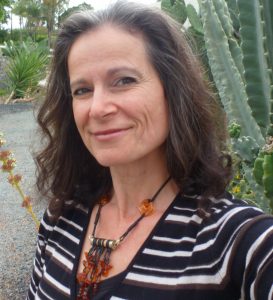
Prof. Gisela Bichler, Department of Criminal Justice, CSUSB, California State University, USA
COVID-19 highlighted two critical elements of human nature. People need human contact and routine behaviors evolve. Associations with others shape our lives, influencing our ideas, attitudes, activities, and opportunities. The physical restrictions of the global pandemic accelerated existing social trends, moving daily activities into the cyber domain. Interactions with others online or in person enriches our lives, but these networks can also expose people to crime. The social fabric of a community is made up of a dynamic pattern of local connections between people. This social fabric is not static or regular, rather it generates distinctive pockets of connectivity. In this way, people’s lives are different and their opportunities to engage in crime vary significantly. The social fabric is anchored by activity nodes that act as convergence locations, hubs of social interaction that facilitate crime opportunities. The current seminar proposes that given much of our routine behavior occurs online, our concept of risky places should expand to hyperspace—sites where people hangout in cyber environments and where the digital domain crosses over into physical space. Using network analytics we can capture how people hang out in hyperspace, mapping out networks of direct contacts through which people access information and situations that expose them to crime.
17 june 2021 (17:30 CET)
Risky facilities: Illegal fishing in the natural environment
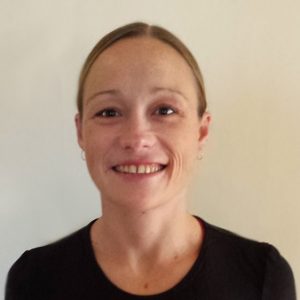
This presentation explores the extent to which a risky facilities framing can be applied to natural features of the environment that provide accessible and attractive places for wildlife crime. Drawing on empirical studies examining illegal fishing in protected areas of the Great Barrier Reef Marine Park in Australia, it demonstrates the spatial distribution of illegal activity in the reef aligns with the iron law of concentration. The presentation outlines the social, biological and natural features of the environment that facilitate accessibility and attractiveness of hotspots applying concepts of crime generators, crime attractors and distance-decay (applied to offender target selection). It concludes by considering the benefits of adopting a risky facilities framing for wildlife crime and implications for prevention.
2 september 2021 (17:30 CET)
Are shopping centers risky places?
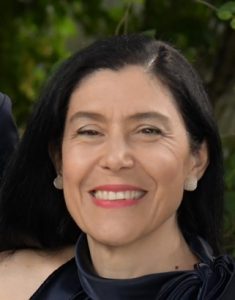
Prof. Vania Ceccato, KTH Royal Institute of Technology, Sweden
In this webinar we propose a conceptual model to study crime in shopping centers. We first discuss the nature of crime in a shopping centre in Stockholm, Sweden using data recorded by the security companies and three-dimensional visualization using BIM (Building information modelling) to detect areas that run higher risk of crime. Findings show evidence of the law of crime concentration – as much as 64 % of all incidents happen in 10 % of meso and micro-places in the shopping center. We then assess whether and how spatial and temporal concentrations of crime relate to particular features of the shopping environment. Finally, we indicate the types of environments that are most in need of safety intervention and the most urgent safety strategies.
16 september 2021 (17:30 CET)
Stadia as risky places: The importance of context
Q&A

Dr. Alina Ristea, Lecturer (Assistant Professor) at the Department of Security and Crime Science, University College London (UCL), UK
The occurrence of crime within an area fluctuates from place to place. Several studies show that events that commonly engage large groups of people at a venue (e.g., stadia) can become crime attractors and generators. The current presentation shows supporting literature, methods, and future paths for stadia as specific activity nodes with influence on criminal behavior, focusing on sporting events. Generally, the works follow a dual subset, one of the game days and one of the comparison days. During game days, routine activities vary around stadia, which can lead to shifting crime hotspots inside and outside the area, such as in pubs or bars where people gather to watch games. Besides traditional crime hotspot analysis in conjunction with risky points of interest proximity or density, this work will also discuss the importance of adding dynamic spatiotemporal and contextual features in the framework (e.g., social media). Moreover, the importance of various risky features and the biases in crime prediction models will be discussed.
30 september 2021 (17:30 CET)
Place Network Investigations to Secure Risky Facilities
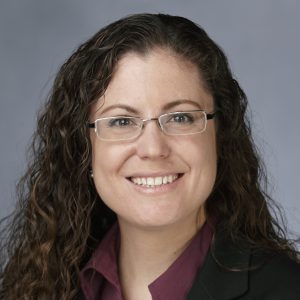
Place Network Investigations (PNI) are used to identify risky facilities and eliminate crime opportunities. Originally designed as a gun violence reduction strategy, PNI focuses on entrenched networks of risky facilities that create persistent crime patterns in systemic violent hot spots. This lecture will describe the four types of risky places that form crime place networks and explain how these networks sustain illicit markets and promote violent interactions. The lecture will conclude with a discussion of how the PNI strategy can be used to identify risky facilities, reduce crime in vulnerable communities, promote a holistic governance public safety model, and offer new paths toward effective police reform.
7 october 2021 (17:30 CET)
Open drug markets as risky places for shootings

Dr. Manne Gerell, Associate Professor, Department of Criminology, Malmö University, Sweden
Gun violence is not random in its dispersal through time and space. It is highly clustered to specific locations, such as open drug markets and “gang”-neighborhoods which taken together can be considered as risky places for gun violence. Such risky places are characterized by having a high criminal network presence, and since the criminal networks tend to be both the victims and the perpetrators of shootings it is perhaps unsurprising to find shootings clustering there. At the risky place the risk for a follow-up incident is in addition much higher than elsewhere, a new shooting occurring nearby within a few weeks, opening up venues for targeted prevention and interventions against gun violence.
21 october 2021
17:30 CET
Airports as Risky Facilities for Crimes

As Clarke and Eck (2007) stated facilities vary greatly in the crimes they experience, and risky facilities analysis can be helpful to focus on to crime prevention efforts. Based on a subsample of NYC federal courts (2007-2017) cases on drug trafficking, it was found that airports are at high risk for trafficking of illicit goods especially drug trafficking. Further it revealed that despite many security measures, airport management has leverage for drug transshipment in any origin, transit and destination points for drug trafficking. Also an analysis of UNODC’s Individual drug seizure data (2011-2016) reveals 11,774 drug seizures at the airports worldwide. Airports (whether international or domestic airports) are huge facilities that attract specifically many transnational crime operators in transporting “hot goods”. Transnational drug trafficking organizations choose various routes and modes to transport their illicit goods to evade detection and arrest and to make sure the goods reach faster and easier to demand countries/locations. The criminal networks have intricate connections with people at all transshipment points thus making airports and serving airlines are suitable targets in providing extensive crime opportunity structure for easy, rewarding and less risky for traffickers. This lecture will emphasize on the contextual factors including size, hot products, location, facilitators, design and management that make airports a risky facility warranting situational crime preventions measures.
4 november 2021 (17:30 CET)
Combining data and community resources to reduce crime at risky places

Crime prevention efforts require strong capacities for collaborative problem-solving and coordination of multiple community stakeholders. Research evidence and case studies will show how to topple silos and integrate multiple stakeholders into data-informed crime prevention strategies that maximize existing local resources at the places that need them most. You will learn how to turn data into risk narratives, or stories, that connect situational contexts with crime patterns and that spur collective actions for prevention programming. We will discuss how police can share the burden of crime prevention with community partners, and how, through co-production, both can enhance public safety without a heavy reliance on law enforcement.
11 november 2021 (17:30 CET)
Reversing Risky Facilities and Re-Thinking Radiating Effects
Dr. Shannon Linning, Assistant Prof. Simon Fraser University, Vancouver, Canada
Research on risky facilities consistently shows that a few places experience most of the crime. Research has also shown that crime may radiate from risky facilities to nearby places. Thus risky facilities may be generating wider spatial effects than early research suggested. However, the reverse may also be true. Place managers—those who control facilities—of low crime places can create radiating effects too. Not only do they supress crime on their properties, they may also diffuse prevention. This implies a need to understand the reverse of risky facilities; it can help us reduce crime at places and across wider areas. In this presentation, I argue that architectural journalist Jane Jacobs provides a framework to do this. Her ideas centered on the role of place managers that most criminologists have overlooked. Jacobs created a scalable explanation describing how safety originates at shops, transforms streets, and stabilizes areas. It is a bottom-up framework of city functioning and crime control. Her work shows what place managers can do to combat risky facilities and extend their control beyond the boundaries of their properties. She also shows how super controllers, such as government agencies, can sway place managers’ decisions. For policy, I explain how Jacobs’ work promotes police partnerships with place managers to solve crime problems. I also outline strategies place managers can use to create safe areas independent of police.
9 december 2021(17:30 CET)
Measuring risk at places

Prof Martin Andresen, Griffiths University, Queensland, Australia
Knowing which places are risky can be an important aspect of where we choose to spend our time and, if we must place ourselves at greater risk, how we spend our time in those places. But how do we measure risk? In this lecture we will go over issues of scale, data sources, and metrics. The crime and place literature has repeatedly shown that risk is best measured at micro-places, knowing where people actually are impacts how we assess risk, and there are many ways to measure risk at places. Using data from Vancouver, Canada we will investigate these issues showing their importance for crime analysis and spatial-temporal criminology, more generally.


